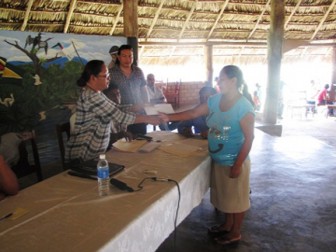The Ministry of Amerindian Affairs (MoAA) has concluded the distribution of flood relief to victims affected by July’s flood in the Rupununi, with Minister Pauline Sukhai indicating that over $64 million was spent in the process.
In response to a question, Sukhai, during her end-of-year press briefing, indicated that the distribution of relief was divided into three phases – the supply of food material, the provision of equipment and technical services and cash relief.
Some $9,763,615 was spent on providing agricultural supplies, planting materials and equipment to farmers upon request, while $54,500,000 was given in cash relief to 2,676 of the most severely affected households.

The households most in need were selected by the regional officials, the minister indicated.
The distribution of the cash relief in Lethem was the last phase of the exercise, Sukhai said. In June, residents of Region Nine were subjected to catastrophic flooding, which caused massive damage to infrastructure, crops and animals.
Opposition parties and members of civil society took the government to task for distributing the relief during the PPP/C’s campaign rally in the community. Clairmont Lye, on behalf of the Lethem Citizens’ Committee (LCC), had called for an investigation into the recent distribution of Rupununi flood relief funds, citing a series of irregularities in the process—including concerns about the authenticity of some names of persons who received the relief. The MoAA sought to respond to the concerns of Lye, who later restated his call.
Addressing the “furore” over the Lethem aid distribution at the campaign rally, Sukhai said that the two events were not deliberately scheduled together, but that the ministry took advantage of the gathering to cut down on cost. The MoAA had previously said in a release that the decision to distribute the aid during the rally was done upon the request of residents.
The aid of $20,000 per household was distributed from the PPP’s headquarters in Lethem.
“Well the Lethem [distribution] was the final leg and obviously the ministry during campaign period cannot stop its work.
The minister may campaign but the staff had to do their work and that was the last leg of the cash incentive,” Sukhai said.
“Of course when benefits are shared during an election period, people want to tie it on. Even though we knew it was an election year, we didn’t know flood would come. We didn’t expect the flood, it just coincided nicely… not nicely with the election but it coincided nicely when the people were at one place and you save a lot of costs in the logistics and the transportation,” the minister said.




